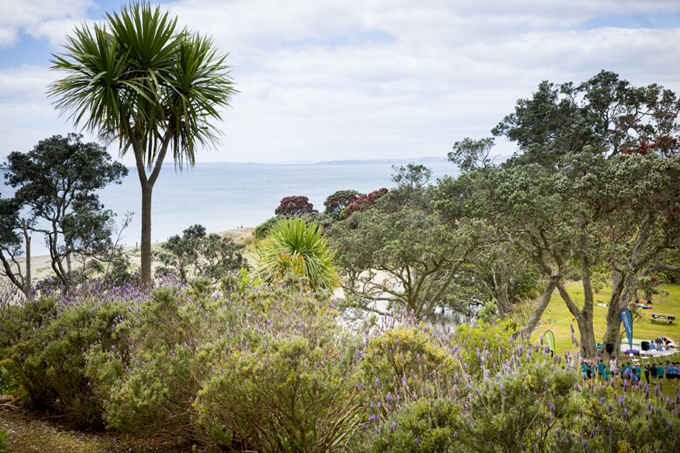As part of the Auckland Council’s 10-year-Budget, Aucklanders prioritised spending to protect our natural environment and improve water quality across the region.
The council has ring-fenced $452 million raised through a water quality targeted rate for projects that will ensure cleaner beaches, streams and harbours. The $311 million natural environment targeted rate will help protect our natural environment and tackle the pests, weeds and diseases that are threatening our native species.
This week the Environment and Community Committee was presented with a progress update after the first three months on work underway and future priorities for these two rates.
Deputy Chair Alf Filipaina commended the work that has been advanced since the two targeted rates were introduced in June.
“We’ve made an impressive start to rolling out these two programmes of work so quickly, and it’s great to have several critical projects underway that will significantly improve the health of our natural environment and water quality." - Councillor Alf Filipaina
“Each and every one of us have an individual role to play in the protection of our blue and green spaces, but this funding is transformational for Auckland’s future.”
Water quality targeted rate
Craig Mcilroy, General Manager, Healthy Waters says the team is getting on with the job to improve water quality.
“We know we’ve got water quality issues that have been problematic for several years, and now it’s time to fix them. We are focused on delivering our region-wide work programme to identify where the problems are and upgrade old infrastructure so that our waterways can be enjoyed by future generations.”
Five key areas of work:
- western isthmus water quality improvement programme - $361 million
- contaminant reduction programme - $54.3 million
- urban and rural stream rehabilitation programme - $22.6 million
- septic tank and onsite wastewater programme - $9 million
- safe networks programme - $5 million.
Mr Mcilroy says many crucial projects have already been accelerated.
“We have really hit the ground running with the western isthmus work prior to the America’s Cup in 2021. We are relocating an outfall in Daldy Street near where the bases will be located, we are working on separation works in Picton Street and we are hoping to start construction on the St Mary’s Bay and Masefield beach project. This work will have a significant impact on improving water quality in the Waitematā Harbour.”
Other key achievements so far:
- The council and Watercare have been undertaking significant network investigations in Northern Manukau, Takapuna and Red Beach to trace sources of faecal contamination in the stormwater network and identify solutions to these issues.
- Existing safe networks programme has been scaled up significantly to reduce public health risks at beaches that are monitored by Safeswim.
- A regionally consistent compliance programme for on-site wastewater systems across Auckland is being developed. This will improve the maintenance and operation of systems, by requiring property owners to regularly provide documentation that their systems have been inspected and maintained.
- A tool is being developed to analyse erosion risk and test where sedimentation is occurring and the ability of natural stream beds to cope with this. It will be used to predict the best places for urban growth for the least impact on water quality.
This map shows the full capital works programme across the region. here.
Natural environment targeted rate
The Natural Environment targeted rate (NETR) will raise $311 million to protect our environment.
“We have lots to do, but the journey to protect and future-proof our natural environment is off to a great start,” says Gael Ogilvie, General Manager Environmental Services
Key aims for the NETR:
- Control pest plants and animal species at high priority sites on our parks, in our harbours, Hauraki Gulf islands and high priority freshwater lakes
- Reduce risk of plant pathogens spreading, especially kauri dieback
- Support community groups, schools and households to take action
“This funding has enabled us to expand our programmes and take a wider regional view, particularly around kauri dieback disease. While we have put in place significant closures in two of our regional parks, we have 4000 parks across the region, of which there is kauri in 400.
“We are now working with local boards and communities to implement proactive measures to protect high-value, disease-free kauri. Recent closures in Kaipātiki were a great example of this.
“We are now in a position to better support the fantastic community groups that work across our regional and local parks and raise awareness about the biosecurity threats we are currently facing, and how we can all do our bit,” she says.
“A recent highlight has been the launch of Te Korowai o Waiheke last month, which is an ambitious programme over the next seven years to make Waiheke pest free. We are supporting this by ramping up our marine biosecurity work; which is timely as it provides an opportunity to showcase all that the Hauraki Gulf has to offer during the America’s Cup.”
Other key achievements so far:
- An expanded round of aerial application of 1080 in the Hunua ranges and adjoining privately owned and Department of Conservation land. This key project will protect endangered bird species, such as kōkako, during the spring breeding season.
- Council’s annual Pestival and inaugural Mayoral Conservation Awards were both held during Conservation week in September 2018. The Pestival was attended by over 500 community groups, reflecting a significant growth in school and community group participation in conservation activities.
- Increased investment of $200,000 per annum in the Regional Environment and Natural Heritage grant scheme to support more community conservation activity.
- Expansion of feral deer, goat and possum control in high priority areas across the region
- Surveying marine pests at Kaipara and Manukau harbours to fill current knowledge gaps and provide data on presence of marine pests.
Read the full work programme here.
Further updates on both targeted rates will be presented in February 2019.


